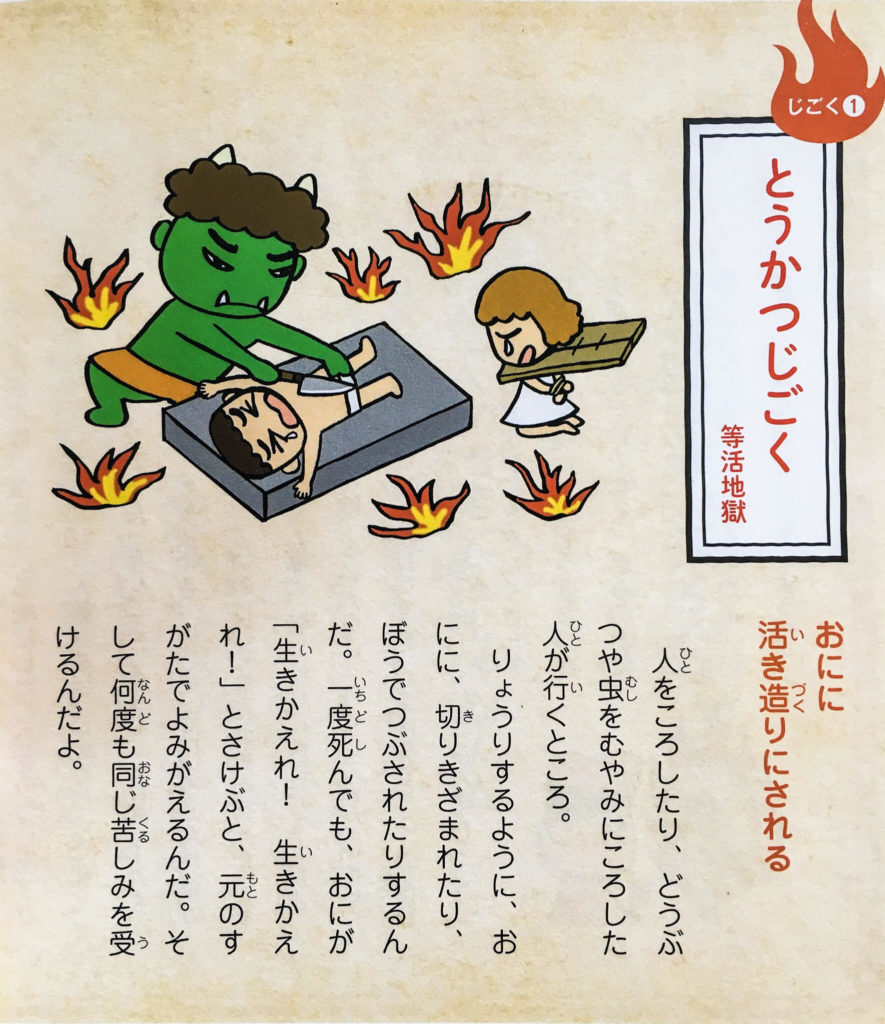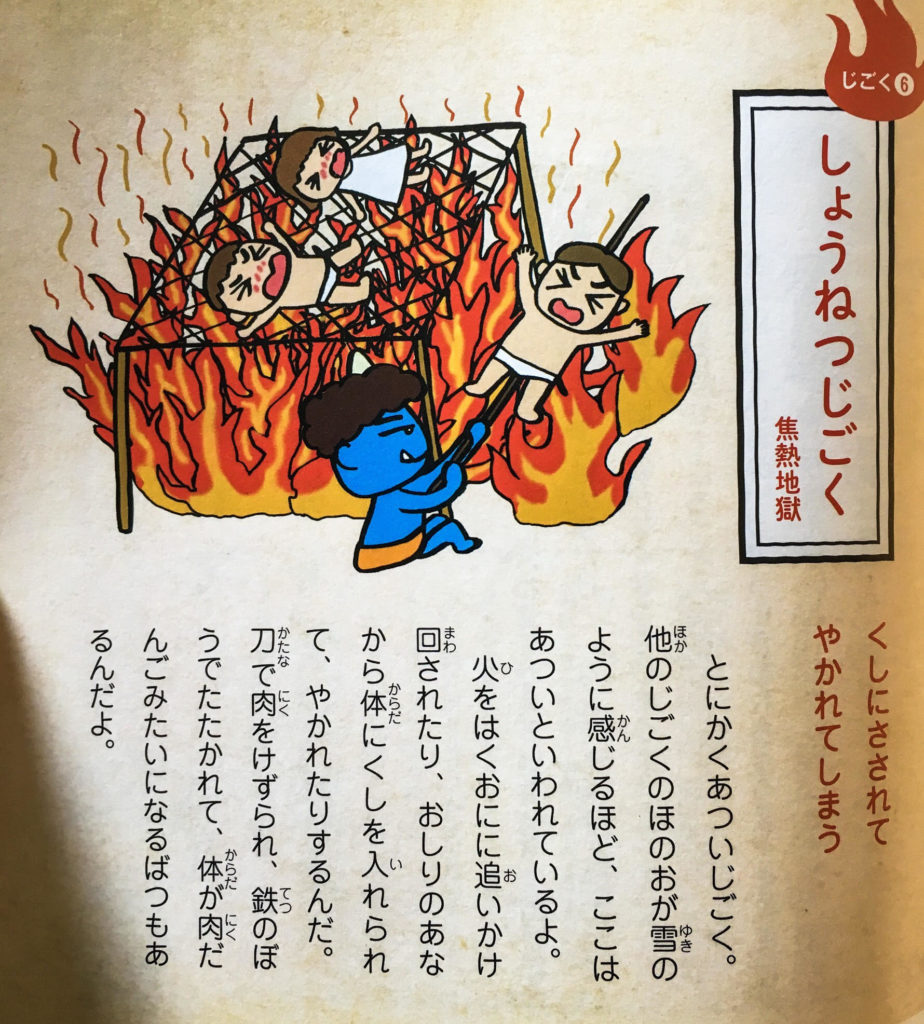In the children’s picture book Teach me Enma-sama, written and illustrated by Hiromi Tanaka, Enma who is the King of Hell in Buddhist mythology teaches children how to behave in a “proper” way by scaring the living shit out of them. The picture book is intended for 5 to 8-year-olds and is partly formatted as a guide for parents to discipline their children as well. The book teaches children what they shouldn’t do and how society works through at times humorous but more often horrifying descriptions about Enma and hell.

Some of the book can be a surprisingly thoughtful approach for children to think about bullying, cheating, lying – things many children tend to do without noticing or understanding the moral implications and consequences.
The book itself is inspired by Hokku-kyo, which is the oldest Buddhist scripture, and Buddhism itself drops many tips about raising children. It furthermore, introduces things to teach one’s children, such as why they shouldn’t be doing “bad” things, social codes, and etiquette.
The book covers 31 topics within three chapters, with roughly one subject per page, with a speech from Enma-sama, following explanation for kids, a message for parents when reading with children as well as the original untranslated sentences from Buddhist scriptures such as the Hokku-kyo.
Bad things children tend to do without noticing is addressed in chapter 1. From not having likes and dislikes about food or leaving unfinished food, to being quiet in public places. It teaches them to become aware of others and that they are not the center of the universe.
Chapter 2 covers topics about the evil that lives in people’s minds, such as jealousy and hatred. It puts a great emphasis on not comparing oneself to others and recognizing that others are not objects but human beings with feelings, just like ourselves. It also mentions that people should stay positive.
Finally, in chapter 3, the evil that dwells in words. Such as that one should be careful when speaking, as once a person says something, it is impossible to unsay it. Thus is tell the reader not to lie, verbally abuse others, as well as to stay true to oneself.

All of this is generally well good, except for the glaring fact that some of the pictures and descriptions provided in the book wouldn’t be out of place in a Saw or similar horror movie, yet are in a book that is intended for young children…………
In conclusion, the book gives a somewhat universal idea of what is good and what is bad, abet in a very black and white fashion, while accompanied by nightmare inducing depictions.
